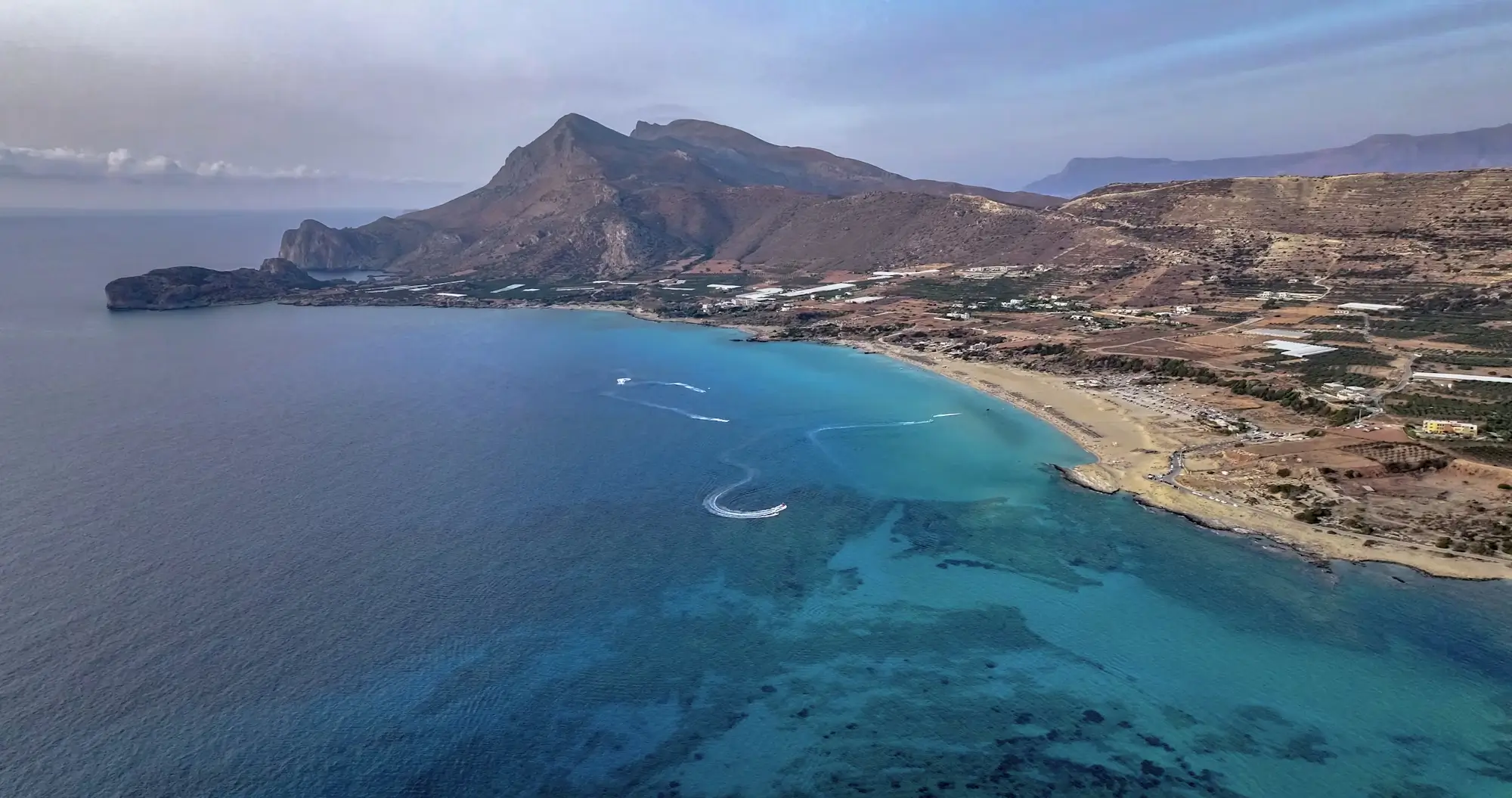The Lady of the Sea – A Tale from Falasarna

1-hour drive from La Torre
Centuries ago, when Crete stood at the crossroads of gods, merchants, and winds, Falasarna was more than just a beach—it was a thriving harbor. Temples, stone marketplaces, and ships bound for Egypt and Asia Minor filled the coast. Locals worshipped the goddess Falasarna, daughter of Poseidon, protector of sailors and celestial guide of the seas.
Legend says that on windless nights, the goddess would rise from the sea in the form of a woman draped in waves. She touched the masts with tenderness and whispered to the anchors, guiding sailors on when to sail and when to wait.
When the ancient city was destroyed, some say by an earthquake, others by Roman envy, the goddess didn’t vanish. They say she hid deep along the shoreline, where the waves still brush the golden sands.
If you sit in Falasarna one afternoon and watch the sun melt into the Libyan Sea, you might feel that silence. A sense that something ancient is quietly watching over you. That’s the Lady of the Sea, and she’s still there.
Helpful Tips
Falasarna Beach is about a 50-minute drive from La Torre and stands among the most stunning and pristine beaches of western Crete. With fine golden sand and clear, shallow waters, it’s perfect for relaxation and family-friendly swimming.
Before You Go
Check the weather forecast (e.g. windfinder.com or meteo.gr) before your visit. If strong winds are expected, especially northwesterly, the sea may be choppy and less ideal for swimming.
Sunbeds or Towels?
The beach has several beach bars and organized areas, but they fill up quickly, especially on weekends in July and August. If you want a sunbed, booking ahead is a good idea. Otherwise, bring an umbrella and enjoy the freedom of stretching out your towel on the open sand.
Falasarna is famous for its breathtaking sunsets. If you can, stay until the sun dips below the horizon, it’s an unforgettable experience.
.webp)
%20(1).webp)
.webp)
.webp)
.webp)
%20(2).png)
%20(1).png)
%20(1).png)
%20(1).png)
.webp)
.webp)
.webp)
.webp)

.webp)